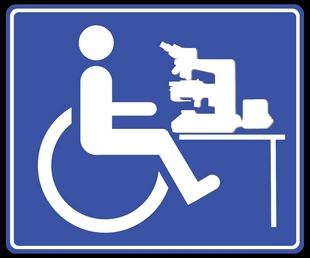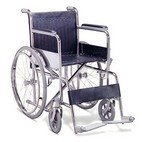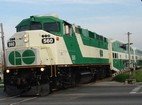Adhesions
(Equivalent to mechanically being rusty and seized up??)
~no anatomical terms included!~
(Equivalent to mechanically being rusty and seized up??)
~no anatomical terms included!~
Who would have thought that after 3 plus years I'd still be so seized up. By that I mean that muscles that once moved freely and smoothly still don't. I don't know how much neurological feedback might play in this (ie. is the body sending messages for muscles to constantly contract) or how much has still not been recovered from disuse after this length of time. In spite of my attempting to move soon after surgery by pulling myself around in the hospital bed by grabbing the rails and twisting, and physiotherapy initiated soon thereafter, the muscles have become tight.
One of the first changes I noticed post-surgery was that when I coughed, I felt like my chest was wrapped in elastic bands that resisted expansion. Each time I coughed, I felt a tightness and a pain from the chest wanting to move but unable to. This tightness was outside of the rib cage so thankfully it had no effect on breathing.
Today, three and a half years later, I still have that sensation although not quite as intense. Muscles have shortened and don't seem to want to respond to stretching and exercises. In fact it almost feels as if they actively resist returning to normal. After exercise and stretching it feels as if the muscles rebel and want to tighten more. I would have thought that after a number of stretches, the muscles would slowly return to a normal state. Unlike a runner that stretches out prior to running, stretches don't seem to have very much of a lasting effect with this injury. Everything wants to rebound back to the contracted state!
In daily activity I suspect I sit up and lie down more than I twist side to side. When an extended stretch is initiated by twisting the torso 90 degrees while seated forward, there is noticeable resistance and it is difficult to turn more than 45 degrees to the side. Repeated isometric, stretching and twisting exercises have probably helped but comes nowhere near returning to normal. When in the pool, this is quickly noticed when lying on my back (with floatation neck collar and foam 'noodle' supporting the ankles). On my first attempt to lie flat on the water and raise either arm straight up into the air, I would roll over like an 'eskimo roll' in a kayak. Over a period of months, the muscles slowly responded and I could raise the arm perpendicular to my body and not roll over sideways.
Increased walking has also developed the muscles in the back. I was amazed as to how important these muscles are to overall stability and walking. As a result these muscles have developed and I can sense this not only from the increased control but also from the discomfort of tearing discussed below.
Other sensations noticed are that my calf muscles are not very pliable but feel as hard as rock. Standing and stretching gives a distinct feeling of the muscle sheaths moving and even sticking as they slide against another. It's a very unnerving feeling! Massage therapy may have helped somewhat.
Adhesions (and Calcifications & Contractures)
So that brings me to the title of this post. I don't quite recall where I heard the term "adhesions" but it must have been from some physiotherapist along the way. When muscles are not used for any period of time, it is my understanding that they become sticky and don't slide smoothly against other muscles and supporting flesh. At times this even gives a ratcheting feeling as if the muscle slides and catches and slides and catches very quickly and repeatedly as it is used. The end result of this might be as severe as adhesions being formed where actual bonds are developed between the various tissues layers and they become fused together, perhaps permanently. In some cases and areas the body may lay down calcium and form boney "calcifications". I've also heard the term "contactures" used where tissues are so fused together in some position that only surgery can separate them.
Now, if any health care professional stumbling upon this blog can correct me on the physiology and terminology, I would be grateful.
...anyways, for what it's worth, this is my impression of my condition. I have no "muscle atrophy" as I would define it. However, as I use my muscles more vigorously and in positions I haven't used in a while they do develop further - with that increase of strength comes an increace in mass and size. (a normal person who is just starting a weight training program does not have atrophied muscles, just underdeveloped ones - which is how I see myself)
Sensations:
Again, as above, I often have that "ratcheting" feeling, particularly in the legs (hamstrings and calves) - where the moving muscle seems to repeatedly stick and release during their movement.
The calves feel hard in spite of repeat walking, standing and stretching.
My back and chest still feel tight and the exercises have helped but who would have thought that they would be this tight after 3 years.
The muscles in my back are strengthening and developing from exercises and walking and as a result they are increasing in size. As this happens I feel the surgical scars periodically tear from the expansion and increased range of movement. I also feel what can only be described as a tearing of flesh sensation (micro tears) in areas where there were no scars. - a quick, sharp tearing sensation! I take this as being an adhesion that lets go. While immediately disconcerting, I accept this occasional and often startling discomfort as being a positive sign of change.
So, like some rusty car that hasn't been driven for a while, it take a while to loosen up the workings. Who would have thought three years and more.







.jpg)

1 comment:
A friend of mine who is paralyzed from a virus saw your link, and I was reading your story.
You might find this quite interesting, it was on our local news last night here in MA.
I could be the beginning of new hope!
http://www.wcvb.com/health/New-spinal-treatment-from-Cambridge-company-could-prevent-paralysis/-/9848730/16213090/-/2g0fa4/-/index.html?absolute=true
Post a Comment